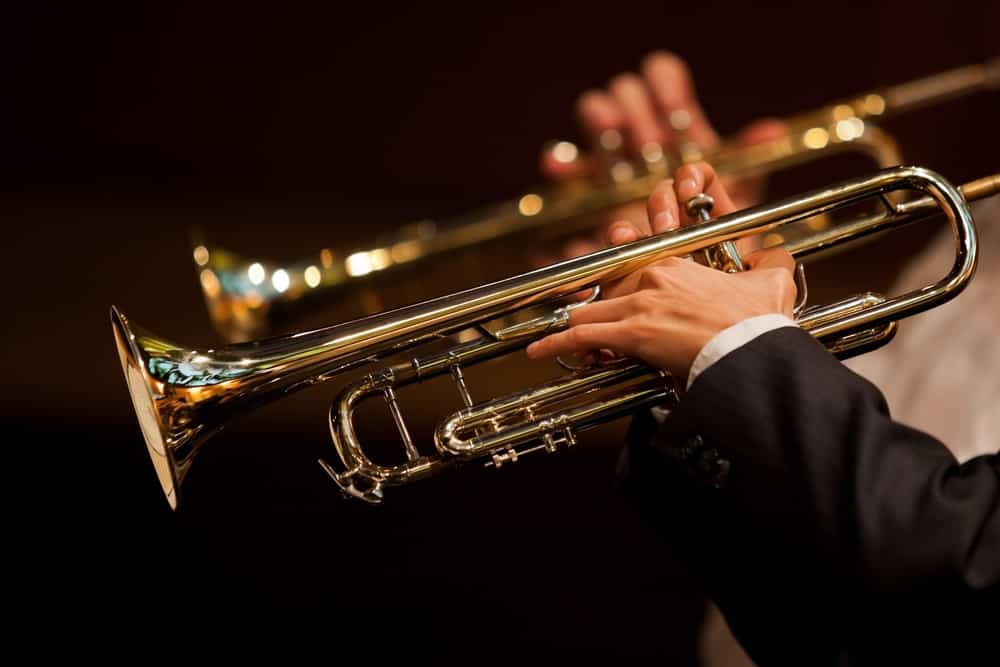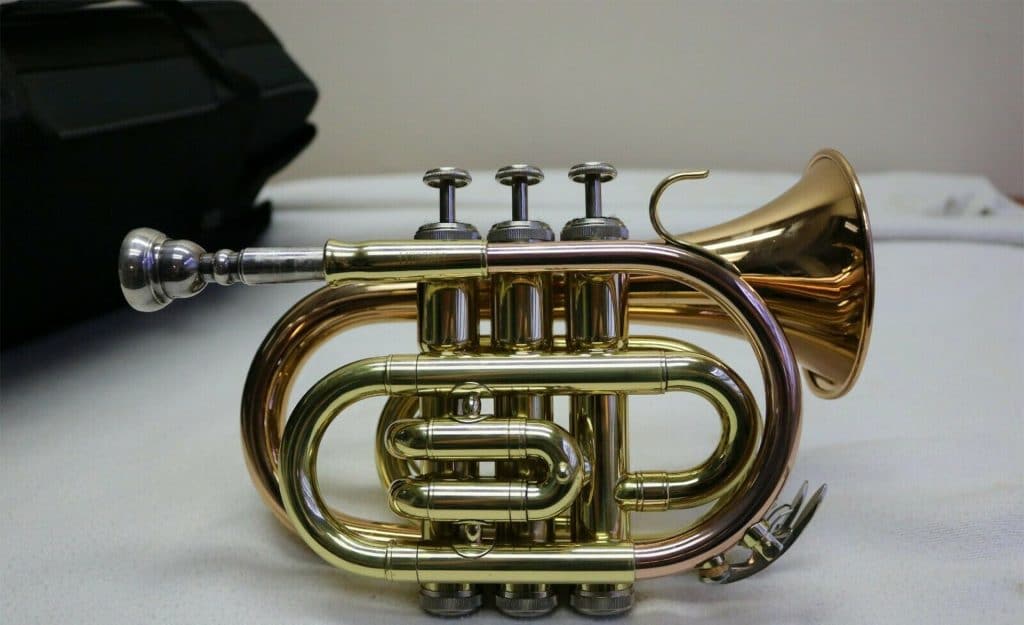Where to start – how you choose a beginner trumpet
As an amateur player, it is likely going to be a challenge for you to choose a good trumpet that will suit your needs. But if you know what you are looking for, the task will become easier. Since you are new to trumpets, it will be easy for you to assume that buying expensive and professional trumpets will help you learn quicker and become a better player. But the opposite is the reality. You see, high-quality trumpets are made with delicate alloys that can dent or bend easily. Keep in mind that a small dent or bend in delicate areas like the lead pipe will seriously affect the sound quality of the instrument.
It is best you buy a trumpet that is made exclusively for beginners as they are made with durable and rugged materials that don’t bend or dent easily.
Of course, you have the freedom to buy any type of trumpet you want, but it is best you settle for one that is made of brass like the Jean Paul USA TR-330 or the Kaizer TRP-1000LQ as they have more resistance. To increase the odds of you choosing a good one, it is wise you buy only from reputable brands like Yamaha and Jean Paul.
Price tag
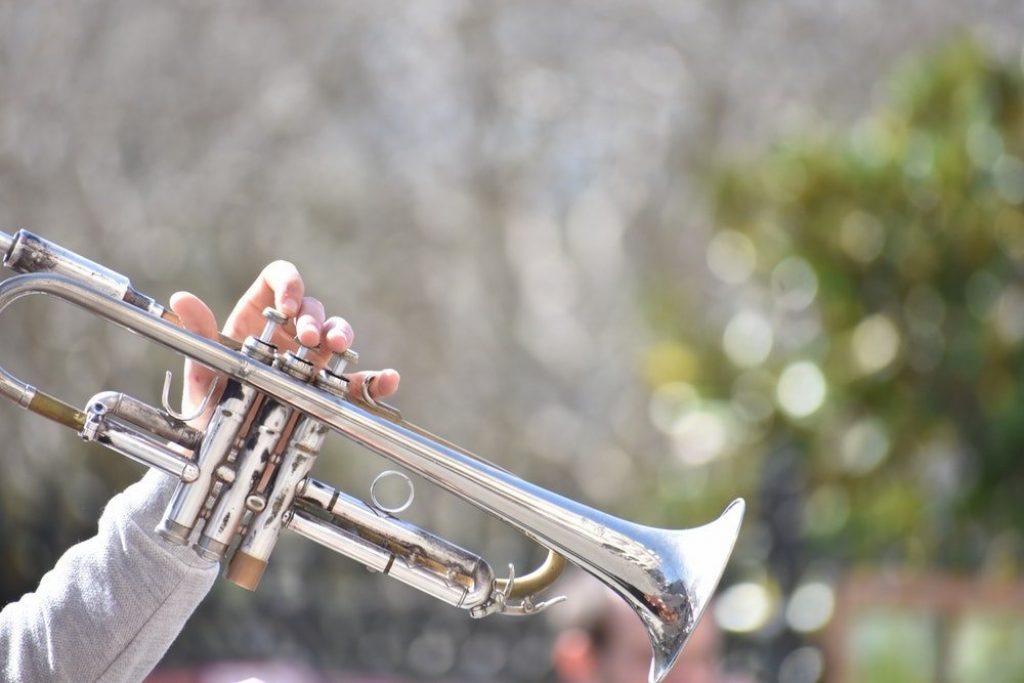 The price of many trumpets from popular brands can range in price from $800 to $1000 plus for a new instrument. If you aren’t sure if you will stick with the trumpet for long, then renting will be a good option. However, if you are crazy about trumpets and want to become an awesome player, then you should consider buying a personal trumpet. Regardless of the type of trumpet you want to buy, you need to keep it in mind that factors like the brand, overall condition, used or new can affect the price of the instrument. Remember that buying the cheapest beginners trumpet you can find isn’t really a smart move as it may be faulty or difficult to play. It is best you opt for top notch, but budget-friendly trumpets like Jean Paul USA TR-330, the Kaizer TRP-1000LQ, and the Mendini MTT-30CN.
The price of many trumpets from popular brands can range in price from $800 to $1000 plus for a new instrument. If you aren’t sure if you will stick with the trumpet for long, then renting will be a good option. However, if you are crazy about trumpets and want to become an awesome player, then you should consider buying a personal trumpet. Regardless of the type of trumpet you want to buy, you need to keep it in mind that factors like the brand, overall condition, used or new can affect the price of the instrument. Remember that buying the cheapest beginners trumpet you can find isn’t really a smart move as it may be faulty or difficult to play. It is best you opt for top notch, but budget-friendly trumpets like Jean Paul USA TR-330, the Kaizer TRP-1000LQ, and the Mendini MTT-30CN.
Cleaning tips for beginners
Cleaning a trumpet isn’t as difficult as you imagined. In fact, it is relatively easy. All you need is some slide grease, dish wash soap and a decent amount of valve oil. Below is a step by step guide on how to clean a trumpet.
- Carefully take the instrument apart, including the valves and slides.
- Use lukewarm water to fill a bucket
- Place each part of the instrument at a time and gently clean them with a soft cloth and a trumpet snake.
- Dry the parts and carefully place them on a rack so that the inner tubing of the instrument can dry.
- Use a valve brush to clean the inside of the valve casings
- Carefully clean all parts of the instrument accordingly and sit them in a protected area until the instrument is dry.
- Oil the valves, re-grease the slides and put the trumpet together
Following features will help you choose the ideal beginner trumpet
In this section, we are going to be looking at some important features you need to consider when looking for the best beginner trumpets on the market.
Read the key
As a newbie, you may not know much about the keys the trumpets are sold in. So, we are briefly going to be taking a close look at them.
Trumpets come in two distinct types of keys –C and Bb
Bb key trumpet
The Bb trumpet is like the most common trumpet on the market. Even more, most music written for the trumpet is for the Bb key trumpet. Presently, the Bb trumpet is mainstream and considered as modern by many because companies produce trumpets only in this key. Buying a standard trumpet will give you the freedom to explore many genres of music. The Jean Paul USA TR-330, the Kaizer TRP-1000LQ as well as the other trumpets reviewed in this guide are Bb key trumpet.
C trumpet
A C trumpet is not as popular as Bb trumpets. It is mainly used by professional players and is slightly more expensive than Bb trumpets. If you are looking forward to pursuing a career in orchestra playing, then this trumpet will be perfect for you.
Material and finish
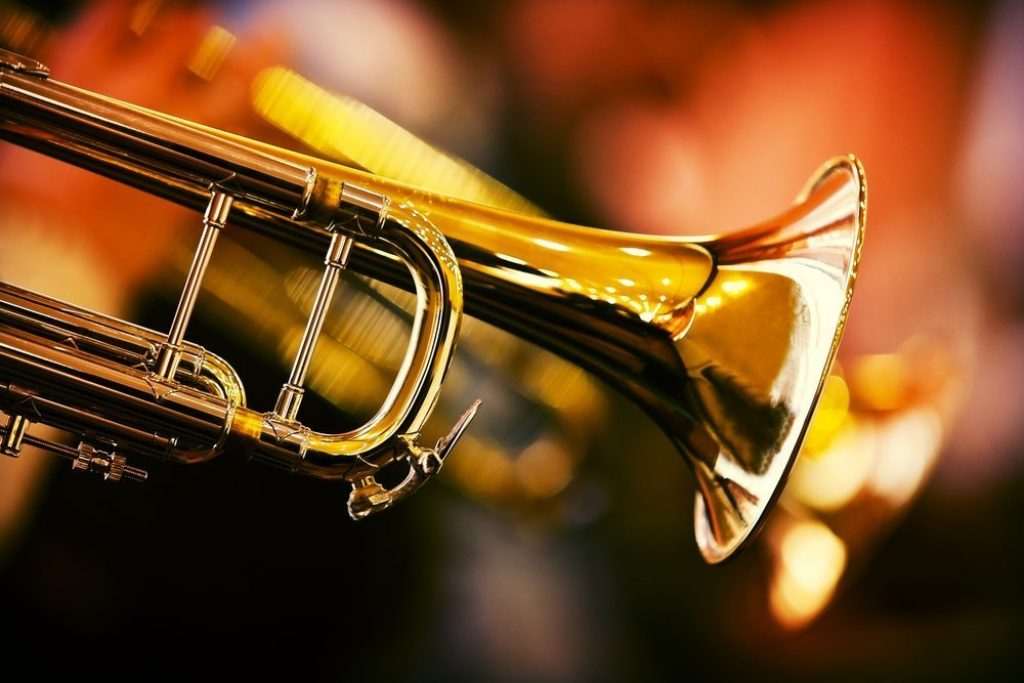 As you probably know, the material a trumpet is made with, as well as its finish, will determine to a large extent how well it will sound.
As you probably know, the material a trumpet is made with, as well as its finish, will determine to a large extent how well it will sound.
In the past, trumpets were spotted with a polished brass finish. Later on, it was discovered that lacquering the instrument will shield or protect the brass and make it last longer.
Just like any other finish, lacquer affects a brass vibration property which in turn alters the timbre of the trumpet sound.
Gold plated horn sounds are somewhat darker than those spotted with a brass finish. A silver finish brightens the sound of the horn.
Weight
This is a very important feature you must give thoughts to when buying a trumpet. Buying a heavy trumpet is likely going to be a pain, as it may fatigue your muscles when you use it for a long time. Also, it may be a challenge for you to move it around and take it to class. Buying a lightweight trumpet like the Jean Paul USA TR-330 or the Kaizer TRP-1000LQ is a smart move. Since they are lightweight, you can effortlessly carry them around with relative ease and play them for long hours without being fatigued.
Mouthpiece
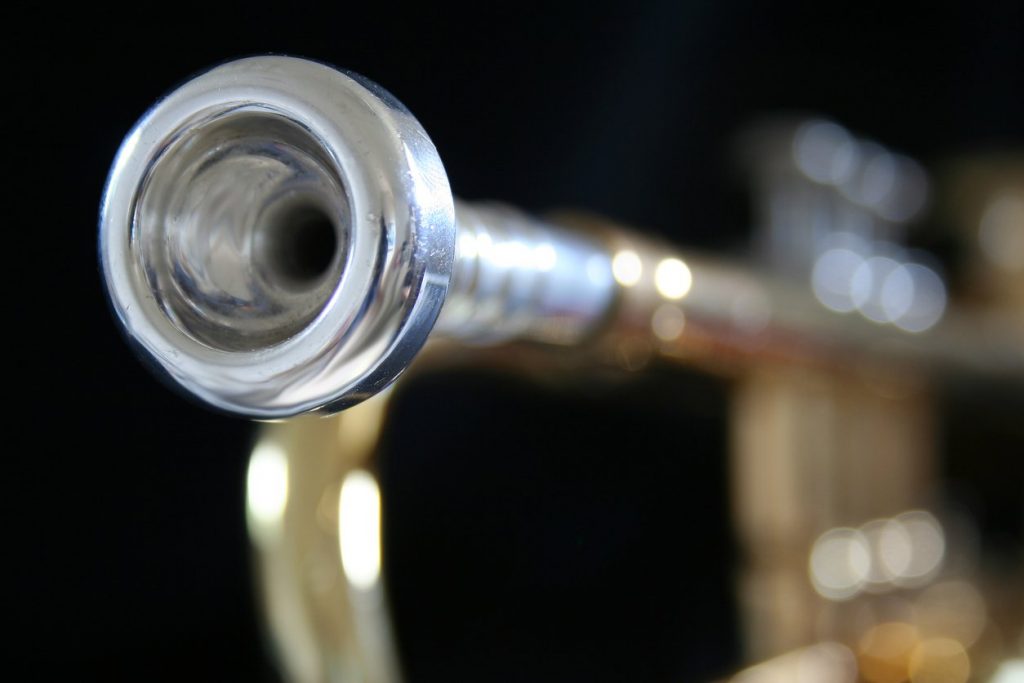 From the viewpoint of an amateur who knows very little or nothing about the instrument, the mouthpiece might seem like a small and insignificant part of the trumpet. But the truth is that it is one the most important part of the trumpet. The reason for this is that it produces the sound, while the rest of the instrument amplifies and color the sound.
From the viewpoint of an amateur who knows very little or nothing about the instrument, the mouthpiece might seem like a small and insignificant part of the trumpet. But the truth is that it is one the most important part of the trumpet. The reason for this is that it produces the sound, while the rest of the instrument amplifies and color the sound.
The size and shape of a mouthpiece is another important thing you must give attention to. A shallower cup will produce a more piercing and bright sound. It also has a better response to higher notes.
On the other hand, a deeper cup mouth will give a mellow and warm sound.
As a beginner, it is best you opt for trumpets with a smaller mouthpiece as it relieves fatigue, which will help you perform or practice with the instrument for a longer period of time.
Keep in mind that some trumpet can have multiple size mouthpiece in their kit. The one you will use will depend on the nature of the sound you want to play.
Most mouthpieces on the market are machined out of brass, but of course, there are others that are made from other materials.
Valve
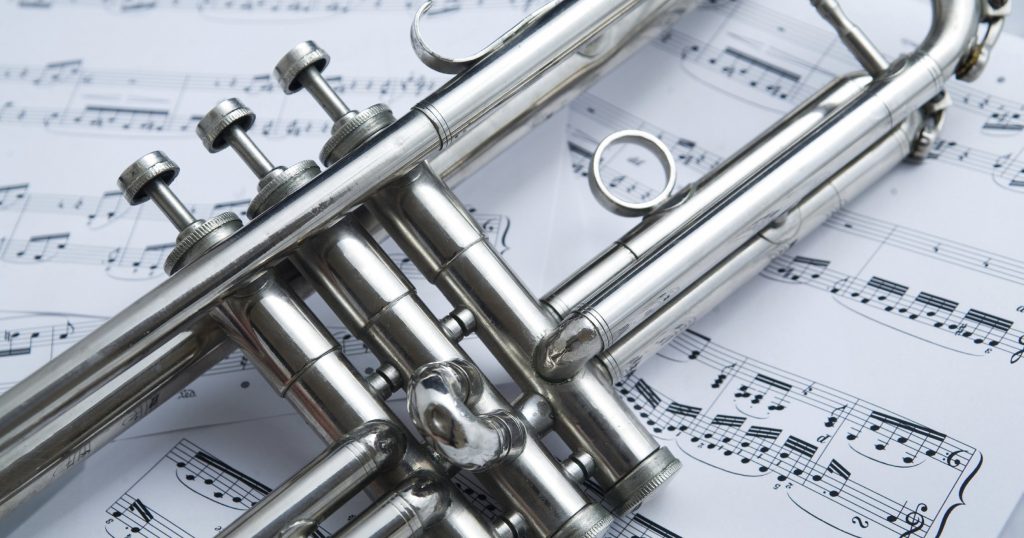 In the past, trumpets didn’t have valves. They were nothing more than a curly horn with a bell and they lacked some 12 pitches needed to produce an excellent timbre.
In the past, trumpets didn’t have valves. They were nothing more than a curly horn with a bell and they lacked some 12 pitches needed to produce an excellent timbre.
Modern trumpet like the Jean Paul USA TR-330 or the Yamaha YTR-2330 has 12 tones, which makes it fully chromatic.
While you won’t use all 12 tones at once, using individual tones when appropriate will help a player produce an excellent sound.
Granted, there are trumpets with four valves, but most trumpets on the market, including the ones reviewed in this guide, have three valves. When engaged, they can add to the tube length which will in turn influence the pitch of the instrument.
Leadpipe
The lead pipe is the part of a trumpet that stretches from the mouth to the first tuning slides. This part of the trumpet controls airflow when it is played. This gives the player greater control over the pitch of their note.
Regardless of the type of trumpet you want to buy, it is wise you pay attention to its bore size- inside the lead pipe.
A medium size bore is perfect for beginners. On the other hand, pros and experts will prefer a larger bore size as they can produce a more fuller and powerful sound.
To ensure that your trumpet lasts long, opt for a trumpet with a lead pipe that is made from premium quality brass like Kaizer TRP-1000LQ or the Jean Paul USA TR-330.
Bell shape
 The bell is what makes the trumpet sound the way it way it does. Also known as the flare, the bell of a trumpet is where the sound is discharged. There are 3 bell factors that alter the nature and the quality of the sound a trumpet produces. They are as follows;
The bell is what makes the trumpet sound the way it way it does. Also known as the flare, the bell of a trumpet is where the sound is discharged. There are 3 bell factors that alter the nature and the quality of the sound a trumpet produces. They are as follows;
- The size
- The metal it was made from
- The shape
It is easy to assume that a large bell will produce a bigger sound, but the opposite is the truth. You see, large bell discharges softer tones. On the other hand, smaller bell produces brighter sounds.
What else should you consider?
One important part of the trumpet that the amateur may not give attention to is the water key. Popularly known as the spit valve, the water key is used to drain the saliva that may accumulate as you play.
While some trumpet has two water key, others have none. Look out for this as you shop.
Another thing you should consider is the braces holding the lead pipe. The trumpet you should opt for should have two braces that will keep it stable as you play.
Necessary accessories
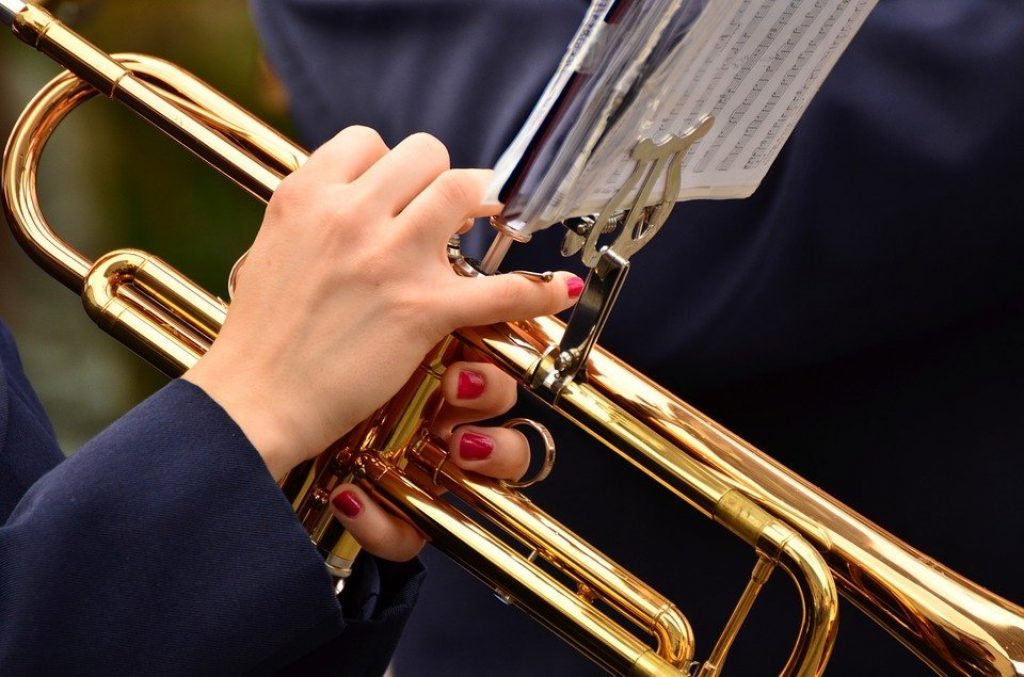 In addition to a top-notch trumpet like the Jean Paul USA TR-330or the Kaizer TRP-1000LQ beginner players can benefit a great deal from accessories like – a care kit with maintenance items, a teaching book, and a music stand. As you can guess, instruments in the hand of beginners are prone to damage from accident, so a maintenance repair plan offered in many music stores is a popular option.
In addition to a top-notch trumpet like the Jean Paul USA TR-330or the Kaizer TRP-1000LQ beginner players can benefit a great deal from accessories like – a care kit with maintenance items, a teaching book, and a music stand. As you can guess, instruments in the hand of beginners are prone to damage from accident, so a maintenance repair plan offered in many music stores is a popular option.
Warranty
Whether you are looking for a high-end trumpet like the Kaizer TRP-1000LQ or a budget-friendly one like the Mendini MTT-30CN it is important that you check its warranty. Most trumpets on the market come with a one-year warranty. However, there are others like the Yamaha YTR-2330 that comes with a 5-year warranty. Thankfully, all the trumpets reviewed in this guide are warranty protected.
Feel free to add something you think is important and relevant, and please mention some of the products reviewed as examples in the buying guide, where appropriate.





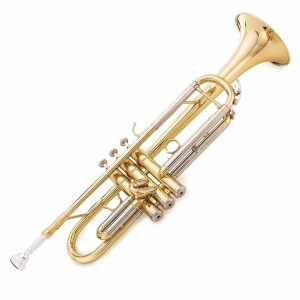
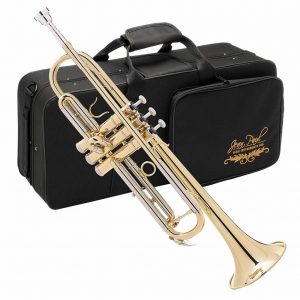
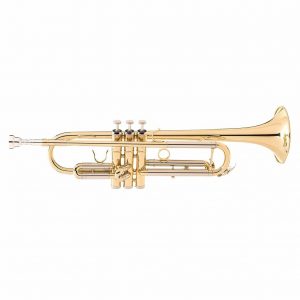
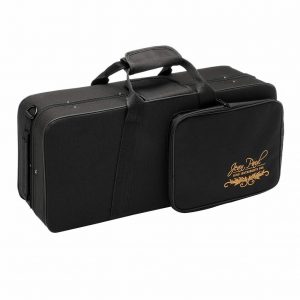
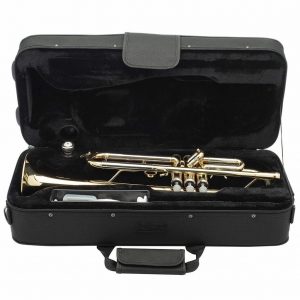
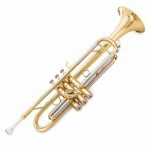
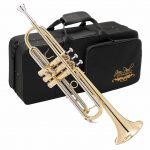

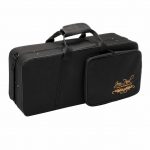
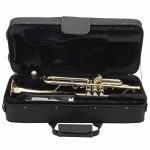
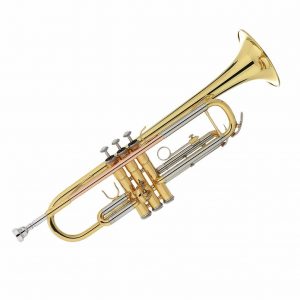
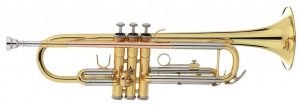
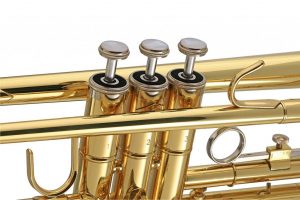
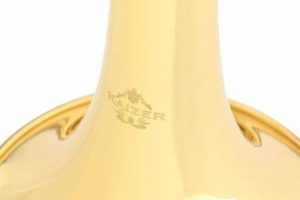


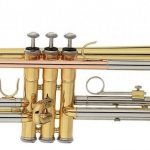
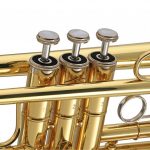
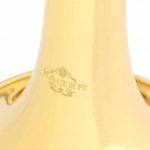
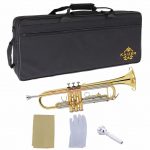
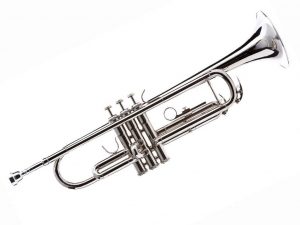
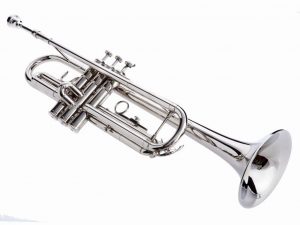
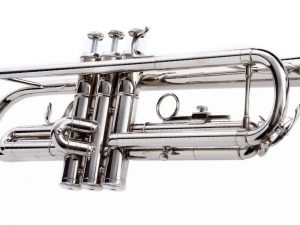
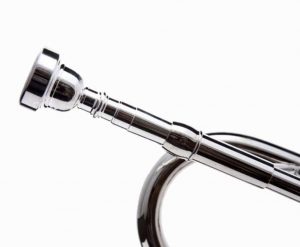
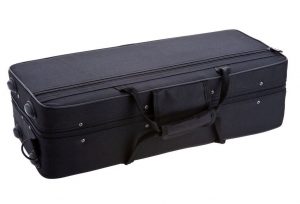
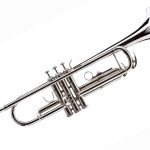
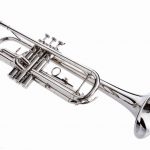
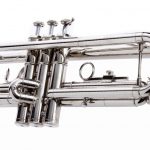


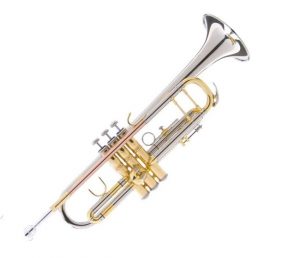


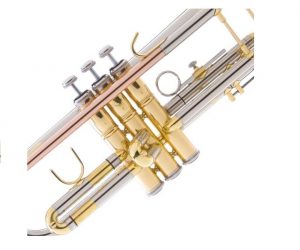
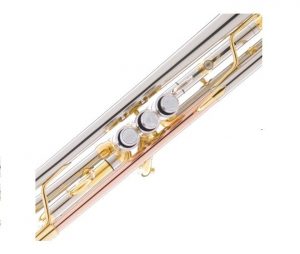
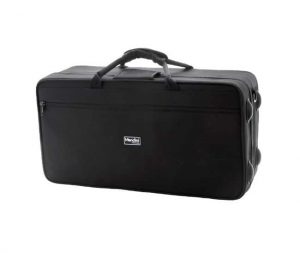

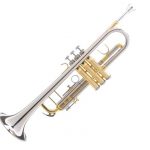
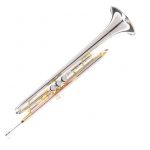
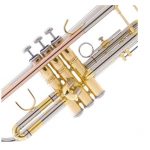
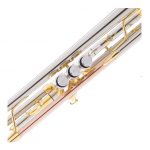
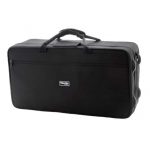


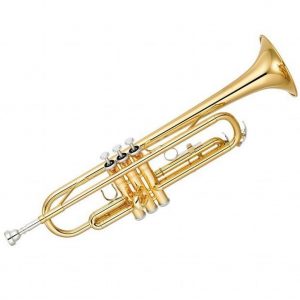
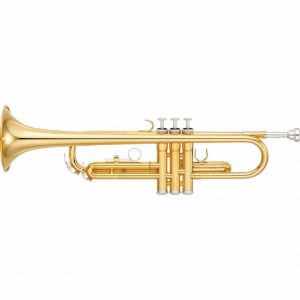



 The price of many trumpets from popular brands can range in price from $800 to $1000 plus for a new instrument. If you aren’t sure if you will stick with the trumpet for long, then renting will be a good option. However, if you are crazy about trumpets and want to become an awesome player, then you should consider buying a personal trumpet. Regardless of the type of trumpet you want to buy, you need to keep it in mind that factors like the brand, overall condition, used or new can affect the price of the instrument. Remember that buying the cheapest beginners trumpet you can find isn’t really a smart move as it may be faulty or difficult to play. It is best you opt for top notch, but budget-friendly trumpets like
The price of many trumpets from popular brands can range in price from $800 to $1000 plus for a new instrument. If you aren’t sure if you will stick with the trumpet for long, then renting will be a good option. However, if you are crazy about trumpets and want to become an awesome player, then you should consider buying a personal trumpet. Regardless of the type of trumpet you want to buy, you need to keep it in mind that factors like the brand, overall condition, used or new can affect the price of the instrument. Remember that buying the cheapest beginners trumpet you can find isn’t really a smart move as it may be faulty or difficult to play. It is best you opt for top notch, but budget-friendly trumpets like  As you probably know, the material a trumpet is made with, as well as its finish, will determine to a large extent how well it will sound.
As you probably know, the material a trumpet is made with, as well as its finish, will determine to a large extent how well it will sound. From the viewpoint of an amateur who knows very little or nothing about the instrument, the mouthpiece might seem like a small and insignificant part of the trumpet. But the truth is that it is one the most important part of the trumpet. The reason for this is that it produces the sound, while the rest of the instrument amplifies and color the sound.
From the viewpoint of an amateur who knows very little or nothing about the instrument, the mouthpiece might seem like a small and insignificant part of the trumpet. But the truth is that it is one the most important part of the trumpet. The reason for this is that it produces the sound, while the rest of the instrument amplifies and color the sound. In the past, trumpets didn’t have valves. They were nothing more than a curly horn with a bell and they lacked some 12 pitches needed to produce an excellent timbre.
In the past, trumpets didn’t have valves. They were nothing more than a curly horn with a bell and they lacked some 12 pitches needed to produce an excellent timbre. The bell is what makes the trumpet sound the way it way it does. Also known as the flare, the bell of a trumpet is where the sound is discharged. There are 3 bell factors that alter the nature and the quality of the sound a trumpet produces. They are as follows;
The bell is what makes the trumpet sound the way it way it does. Also known as the flare, the bell of a trumpet is where the sound is discharged. There are 3 bell factors that alter the nature and the quality of the sound a trumpet produces. They are as follows; In addition to a top-notch trumpet like the
In addition to a top-notch trumpet like the 






